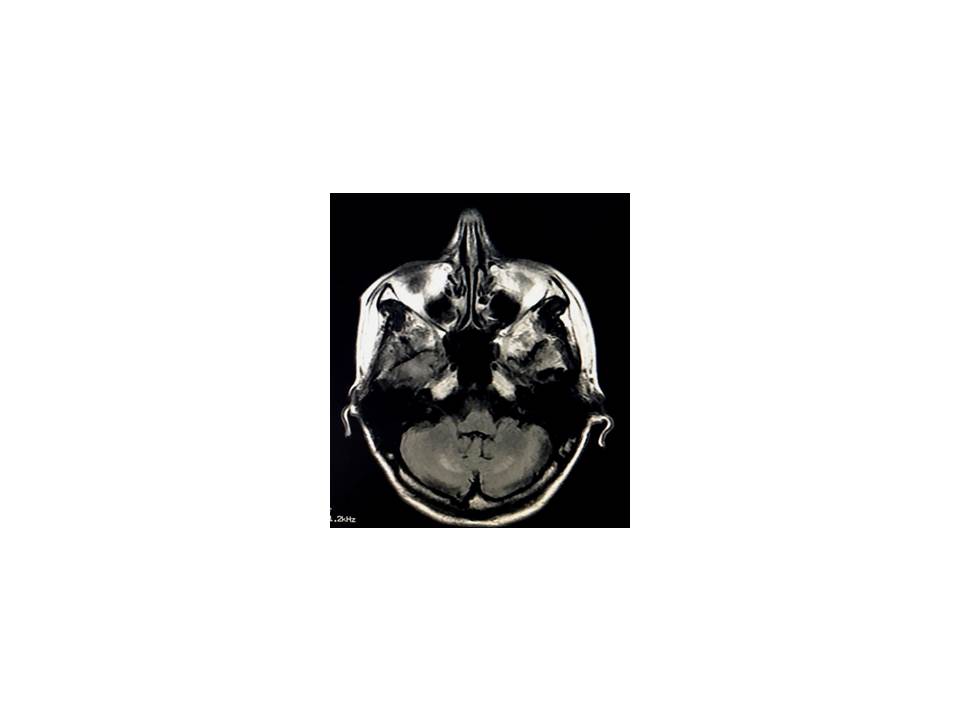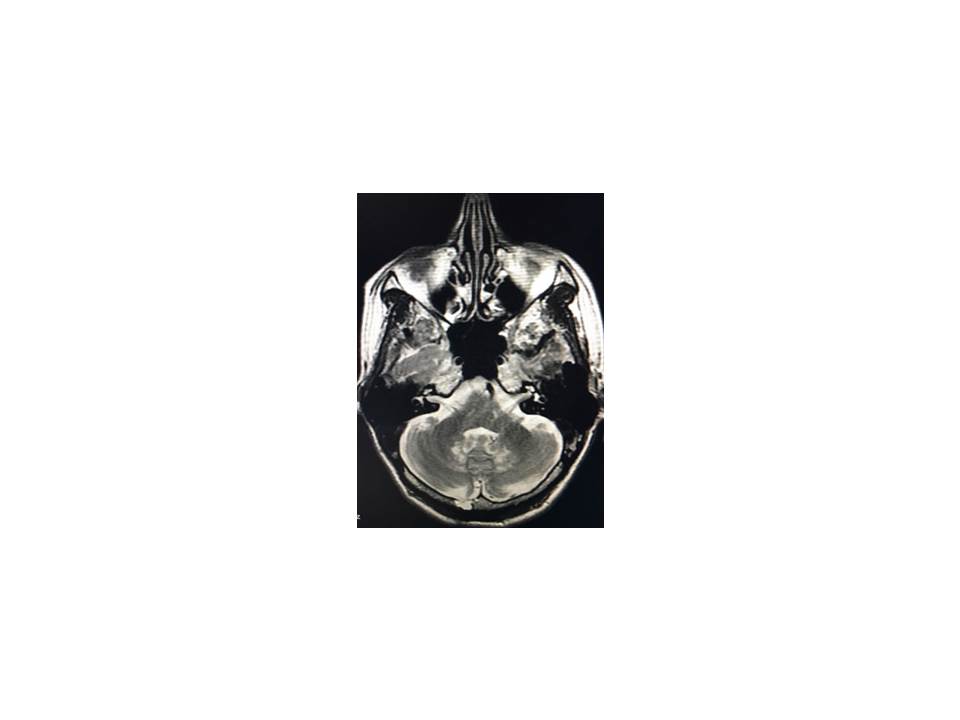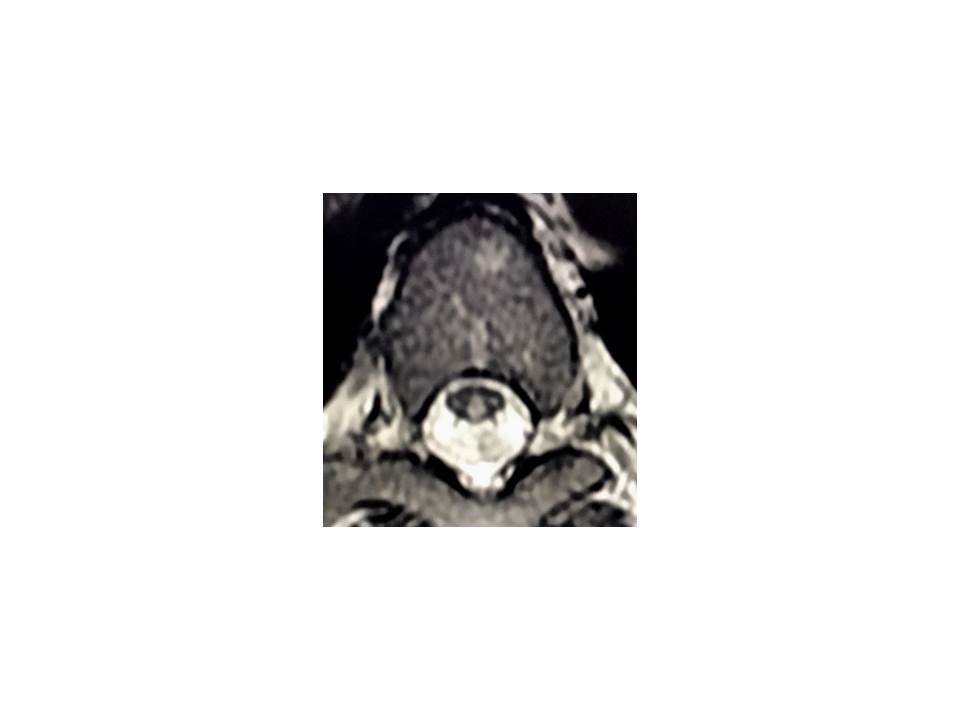Session Information
Date: Monday, September 23, 2019
Session Title: Rare Genetic and Metabolic Diseases
Session Time: 1:45pm-3:15pm
Location: Les Muses Terrace, Level 3
Objective: To present a case in which the MRI of a patient with cerebrotendinous xanthomatosis (CTX) revelaled impairment of whole neuroaxis.
Background: CTX is a rare autosomal recessive leukodystrophy caused by mutations in the CYP27A1 gene, which encodes sterol 27-hidroxylase. The deficiency of this enzyme causes the accumulation of cholesterol and cholestanol, resulting in xanthomas in tendons, CNS, skin and other organs. Clinical and imaging aspects of CTX is variable.
Method: A 56-year-old caucasian woman presented with progressive ataxia (over 40 years), behavioral and cognitive impairment and dysarthria.She reported learning difficulties since childhood, episodic diarrhea and juvenile cataracts. Her cognitive and physical condition gradually deteriorated over years but maintaining independence for some activities of daily living. Her paternal grandfather and aunt had ataxia and dementia without diagnostic confirmation. There was no parent consanguinity. Physical examination revealed gait ataxia, dysmetria in 4 limbs, dysarthria, and brisk tendon reflex with bilateral Babinski sing. There was also bilateral pes cavus as well achilles and patellar tendons xanthomas.(Fig.1). Brain and spinal cord MRI showed diffuse symmetrical white matter hyperintensities on axial T2/FLAIR. (Fig. 2,3 e 4); Serum cholestanol : 1,81 (Reference:0,248).
Results: The main clinical manifestations are cataracts, premature atherosclerosis, tendon xanthomas and neurological impairment; The neuroimaging revealed brain, cerebellar and spinal cord white matter hyperintensities involving the brain, cerebellum and spinal cord (encephalomyelopathy);
Conclusion: CTX should be considered in the differential diagnosis of progressive encephalomyelopathies; Early diagnosis is crucial as it is a treatable inherited leukodystrophy.
To cite this abstract in AMA style:
ACO. Oliveira, LFV. Vasconcellos, BXC. Cordeiro, LLN. Najar. Encephalomyelopathy Due to Cerebrotendinous Xanthomatosis [abstract]. Mov Disord. 2019; 34 (suppl 2). https://www.mdsabstracts.org/abstract/encephalomyelopathy-due-to-cerebrotendinous-xanthomatosis/. Accessed April 2, 2025.« Back to 2019 International Congress
MDS Abstracts - https://www.mdsabstracts.org/abstract/encephalomyelopathy-due-to-cerebrotendinous-xanthomatosis/



